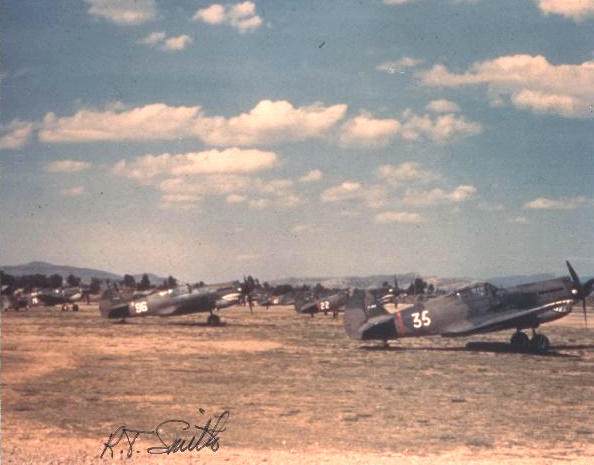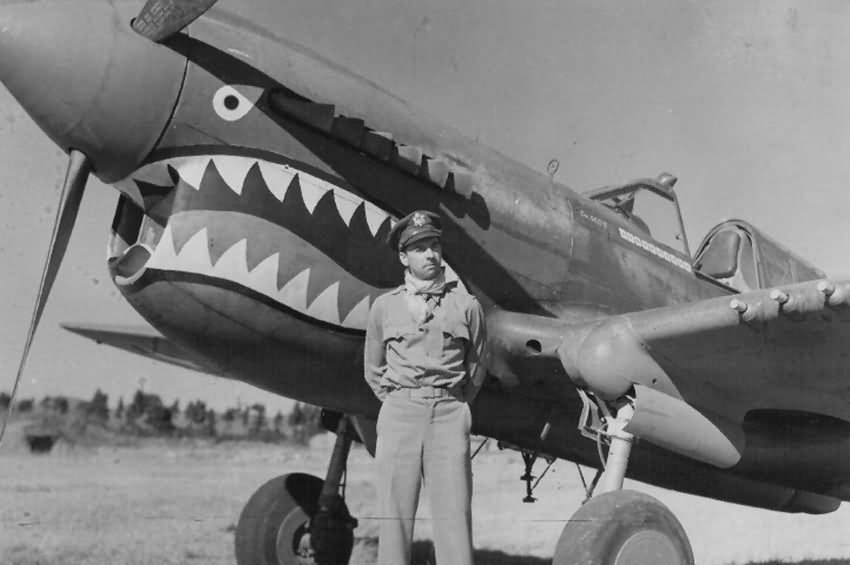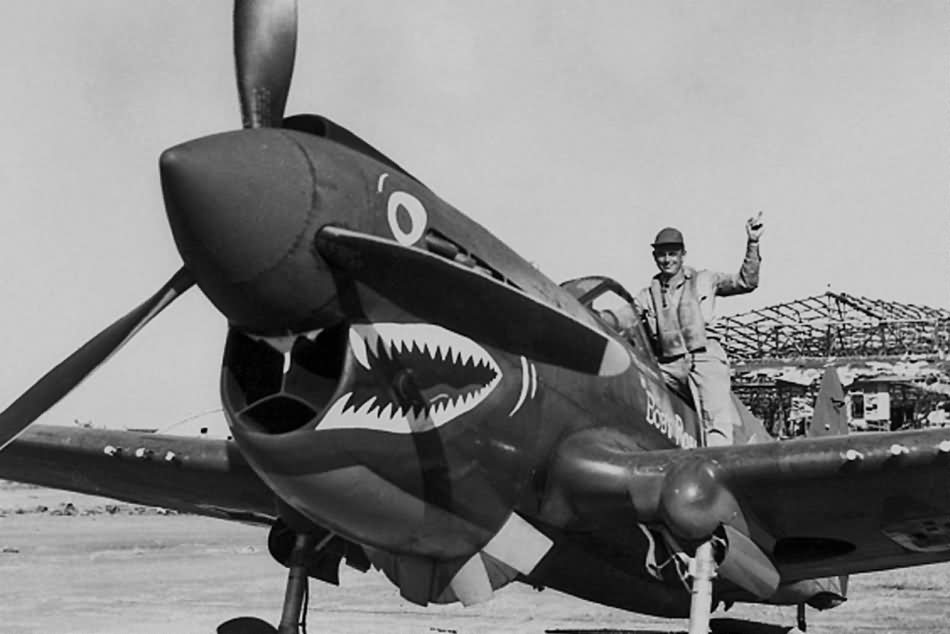Document Source: Air Operations, China-Burma-India by Maj Edward M. Hudak, Command and General Staff College, May 31, 1949.

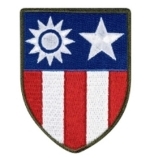 AIR OPERATIONS CHINA BURMA INDIA
AIR OPERATIONS CHINA BURMA INDIA
The problem was the way to determine the need for, extent, and results of air operations in the China-Burma-India Theater. Facts bearing on the problem! (1) The critical condition of the Chinese prior to World War II. China‘s critical condition, as a result of Japanese aggression, motivated the extension of aid, to China. Credits first granted in 1933 and 1934 were renewed in 1938 for $25.000.000 and, with additional loans, reached a total of $170.000.000 by the end of 1940. Economic support with the United States withdrawing from Japan was extended on a growing scale to China. (2) The strategic importance of China to the United States after hostilities with Japan opened. The attack on Pearl Harbor and the subsequent capture of islands in the Pacific denied us the natural bases for an offensive against Japan from the mainland of China. It made India, at best, a difficult and possibly temporary way station. (3) The inadequacy of the Chinese Air Force to support its ground forces or provide adequate protection to the supply lines against Japanese air attacks. Overland transport into China rather than oceanic shipping to Burma and India proved to be the bottleneck of the China-Burma-India supply. The <>Burma Road was China‘s lifeline to the outside world after Japan had occupied the coast and established a naval blockade in 1938. The distance by air from Lashio, the railhead in Burma fed by the port of Rangoon, to Kunming in the Yunnan Province, is 260 miles. The Chinese began to build it late in 1937 to circumvent the Japanese blockade. The first traffic in 1939 brought supplies into China at the rate of 3500 tons a month, rising to 12000 tons monthly in 1941, with the introduction of American methods of maintenance; though a large proportion of the tonnage went for gasoline to fuel the trucks. From the middle of 1941 to the fall of Burma, which closed the road, it was protected by the Flying Tigers, officially the AVG under Gen Claire L. Chennault. This small group shot down 286 Japanese planes with the loss of only eight pilots.
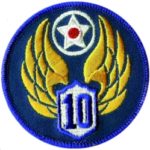 (4) The seriousness of the supply situation in China after the Japanese blocked the Burma Road and tightened their blockade on the east and south of China. Realizing the importance of the China, Burma, and India areas and the magnitude of the subsequent operations to be conducted therein, the China-Burma-India Theater was established early in 1942. Gen Joseph Stilwell was placed in command of the United States troops.
(4) The seriousness of the supply situation in China after the Japanese blocked the Burma Road and tightened their blockade on the east and south of China. Realizing the importance of the China, Burma, and India areas and the magnitude of the subsequent operations to be conducted therein, the China-Burma-India Theater was established early in 1942. Gen Joseph Stilwell was placed in command of the United States troops.  (5) India and China were in danger of being overrun by the Japanese after the conquest of Burma. Concurrent with the formation of the China-Burma-India Theater, plans were made for the expansion of air effort in the India-Burma Theater and in the China Theater. The Tenth Air Force was activated and became operational in the Theater, during the summer of the year 1942. (6) According to the importance of the strategic locations of Burma and India to the United States, the 10-USAAF flew from India bases with a three-fold mission of guarding the Hump Air Line (Himalayas) of the Air Transport Command, into China, and attacking enemy supplies in Burma and Thailand.
(5) India and China were in danger of being overrun by the Japanese after the conquest of Burma. Concurrent with the formation of the China-Burma-India Theater, plans were made for the expansion of air effort in the India-Burma Theater and in the China Theater. The Tenth Air Force was activated and became operational in the Theater, during the summer of the year 1942. (6) According to the importance of the strategic locations of Burma and India to the United States, the 10-USAAF flew from India bases with a three-fold mission of guarding the Hump Air Line (Himalayas) of the Air Transport Command, into China, and attacking enemy supplies in Burma and Thailand. 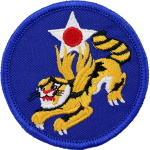 It bombed 150 targets, including Rangoon, the Moulmein and Akyak docks, Lashio and Henzada storehouses, and the rail junctions of Rangoon, Mandalay, and Sagaing, almost denying the enemy use of rail lines in Burma. In its career, the 10-AAF destroyed 622 enemy aircraft, losing only one plane to every two planes destroyed. It flew some 96000 sorties and dropped approximately 47.600 tons of bombs on the enemy successfully disrupting Japanese supply lines in Burma and preventing the enemy drive toward India.
It bombed 150 targets, including Rangoon, the Moulmein and Akyak docks, Lashio and Henzada storehouses, and the rail junctions of Rangoon, Mandalay, and Sagaing, almost denying the enemy use of rail lines in Burma. In its career, the 10-AAF destroyed 622 enemy aircraft, losing only one plane to every two planes destroyed. It flew some 96000 sorties and dropped approximately 47.600 tons of bombs on the enemy successfully disrupting Japanese supply lines in Burma and preventing the enemy drive toward India.
(7) The employment of air transport to overcome terrain obstacles in the movement of supplies. Prior to the activation of the 10-AAF, the Chinese were being supported by the American Volunteer Group (AVG), which became operational in December 1941. With the termination of their contracts with the Chinese Government on July 4, 1942, they were replaced by the China Air Task Force. Although a part of the 10-AAF, excessive distance and lack of adequate communication precluded close supervision for the 10-AAF. Operating independently, with the same mission as their predecessors, they destroyed 182 enemy aircraft and probably destroyed 87 others. During their operations, they dropped 350 tons of bombs and sunk 50.000 tons of enemy shipping.  (8) The only American units committed to combat in the China Theater were air force organizations. On March 10, 1943, the China Air Task Force was re-designated the Fourteenth Air Force, operating directly under the Theater. Though numerically small, the responsibility of the 14-AAF was a man-sized job. It had to conduct effective fighter and bomber operations along a 2000-mile front, which extended from Chunking and Chengtu in the north to Indo-China to the south; from the Tibetan Plateau and the Salween River (Burma) in the west; to the China Sea and the Island of Formosa in the east. Taking full advantage of their interior position, the 14-AAF jabbed the enemy off balance and kept him guessing. Although extremely handicapped, due to lack of adequate supplies, the results of their operations indicate the degree of success attained. (9) Air operations were conducted in the China-Burma-India Theater by the United States Army Air Force, and the important contribution of airpower in the China-Burma-India Theater to the ultimate defeat of Japan. From the birth of the China Air Task Force in Jul 1942 to the end of May 1945, the US forces in China destroyed 2348 Japanese aircraft, with another 778 probably damaged. Japanese shipping losses amounted to 2.267.389 tons. They destroyed or damaged 3918 locomotives and a larger number of railroad cars. During the operations, the Air Transport Command protected by the 10-AAF and 14-AAF transported troops, supplies, and equipment to all parts of the CBI Theater. The 20th Bomber Command, based in India and China, operated their B-29s to strike at targets out of reach of the other air forces.
(8) The only American units committed to combat in the China Theater were air force organizations. On March 10, 1943, the China Air Task Force was re-designated the Fourteenth Air Force, operating directly under the Theater. Though numerically small, the responsibility of the 14-AAF was a man-sized job. It had to conduct effective fighter and bomber operations along a 2000-mile front, which extended from Chunking and Chengtu in the north to Indo-China to the south; from the Tibetan Plateau and the Salween River (Burma) in the west; to the China Sea and the Island of Formosa in the east. Taking full advantage of their interior position, the 14-AAF jabbed the enemy off balance and kept him guessing. Although extremely handicapped, due to lack of adequate supplies, the results of their operations indicate the degree of success attained. (9) Air operations were conducted in the China-Burma-India Theater by the United States Army Air Force, and the important contribution of airpower in the China-Burma-India Theater to the ultimate defeat of Japan. From the birth of the China Air Task Force in Jul 1942 to the end of May 1945, the US forces in China destroyed 2348 Japanese aircraft, with another 778 probably damaged. Japanese shipping losses amounted to 2.267.389 tons. They destroyed or damaged 3918 locomotives and a larger number of railroad cars. During the operations, the Air Transport Command protected by the 10-AAF and 14-AAF transported troops, supplies, and equipment to all parts of the CBI Theater. The 20th Bomber Command, based in India and China, operated their B-29s to strike at targets out of reach of the other air forces.
RESULTS
(a) Contribution of AirPower. A partial indication of air power’s contribution to the victorious result attained in the China-Burma-India Theater is listed above. In spite of their impressiveness, the listed data does not present the overall objectives gained as a result of the victories indicated. The following presentation covers these objectives.
(b) Air Power in India-Burma.
(1) Air power not only played a major role in preventing the Japanese occupation of India but completely isolated the Burma battlefields. This action proved demoralizing to the enemy and had an adverse effect on his war-making capability.
(2) The Air transport operations on which survival of the ground depended, and the forces operating on the ground, were rendered free from air attack by the enemy with the attainment of air superiority in the India-Burma area.
(3) By direct attack on enemy troops, installations, equipment end lines of communication, airpower aided to destroy the Japanese force in Burma.
(4) From India-Burma, airpower supplied the military effort in China in the greatest air transport effort of its time.
(c) Air Power in China.
(1) Airpower was instrumental in preventing the occupation and control of all of China by the Japanese armies.
(2) Strikes on shipping and interdiction of north China‘s railways and highways, and very heavy bombardment attacks on Japanese home islands by China-based aircraft, materially assisted in the disrupting of the entire Japanese war economy and war-making potential.
(3) Operations of China-based air power forced the Japanese to dissipate logistical potential to campaigns in China, which otherwise might have been more effectively employed in the Pacific. By attaining air superiority, China-based airpower assured the allied forces and operations protection from enemy air attacks.
(4) China-based airpower contributed heavily to the attrition of Japanese military power.
CONCLUSIONS
(a) Air operations in the China-Burma-India Theater have given rise to the formulation of a new doctrine and provided strategic planners with a wider range of thought in determining operations for the future.
(b) The Potentiality of Air Transport conclusively demonstrated, prior to 1942, air transport was confined in the main, to carrying passengers, limited supplies, usually of an emergency nature, mail, aid for cargo transport on a limited scale. The situation in China demanded that some form of aerial transport be initiated since the terrain and the enemy prevented the use of the conventional land and sea lanes of communication.
(c) Initial successes soon proved that only the number of available aircraft and airfields limited the amount of cargo that could be airlifted. As these planes were supplied, new airfields were constructed and personnel made available, the intensity of the ground and air operations increased.
(d) The ability of air transport to adequately provide for combat forces isolated from the land and sea lanes of communication was amply demonstrated.
(e) The acceptance of this new doctrine, new because it was not accepted by strategic planners prior to 1942, gives rise to three ideas:
(1) Land or sea lines of communication to battle areas are not essential, though the size of force supported will be governed by limitations discussed previously. The aerial line of communication is particularly adaptable to operations in areas where: (a) difficult terrain forms a barrier to landlines; (b) sea lines or waterways are not available or enemy-controlled; (c) a combination of aforementioned conditions; (d) the use of an aerial line of communication may be required where speed rather than the economy is the governing factor.
(2) Force may be masses, supplied and sustained anywhere in the world.
(3) Air transport will provide flexibility in the defense of an extensive area, where the resources of a nation preclude the establishment of a defense of the entire area, and the exact location of the enemy strike is unknown.
Edward M. Hudak
Maj, Field Artillery
PERIOD 1937-1938
Critical Condition of China Prior to World War II
Beginning with the Marco Polo Bridge outbreak on July 7, 1937 (#), China steadily lost its fight with the Japanese. Ill-equipped, and having lost her best armies and meager air force in the initial engagements, she offered little effective or sustained resistance to the Japanese advances. By the end of 1938, superior Japanese forces overran Shanghai, Nanking, Hankow, Canton, and the strategic Pearl River Delta. Japan now controlled China‘s northern railroads; had sealed off the Yangtze River and the Yellow River; controlled ninety-five percent of China‘s modern industry; had possession of the major seaports and held key areas in eleven Chinese Provinces. Secure in the belief that they now held strategic and economical control of China, the Japanese settled down to a gradual attrition of China‘s resources as the most convenient means of achieving their objectives in China. Knowing that China did not possess sufficient armed strength to counter-attack, the Japanese expected an early capitulation by the Chinese Government due to the strangulation effect imposed by the blockade. The Chinese were able to hold out, however, on the meager supplies coming in on the Burma Road, through northern Indo-China, the Trans-Siberian Railway and via their lone airway from the coast to the interior from Hong Kong.
(#) Tensions between the Empire of Japan and the Republic of China had been heightened since the Japanese invasion of Manchuria in 1931 and their subsequent creation of a puppet state, Manchukuo, with Puyi, the deposed Qing Dynasty Emperor, as its head. Following the invasion, Japanese forces extended their control further into northern China, seeking to obtain raw materials and industrial capacity. A commission of enquirer from the League of Nations made a critical report into their actions, leading to Japan pulling out of the League.
